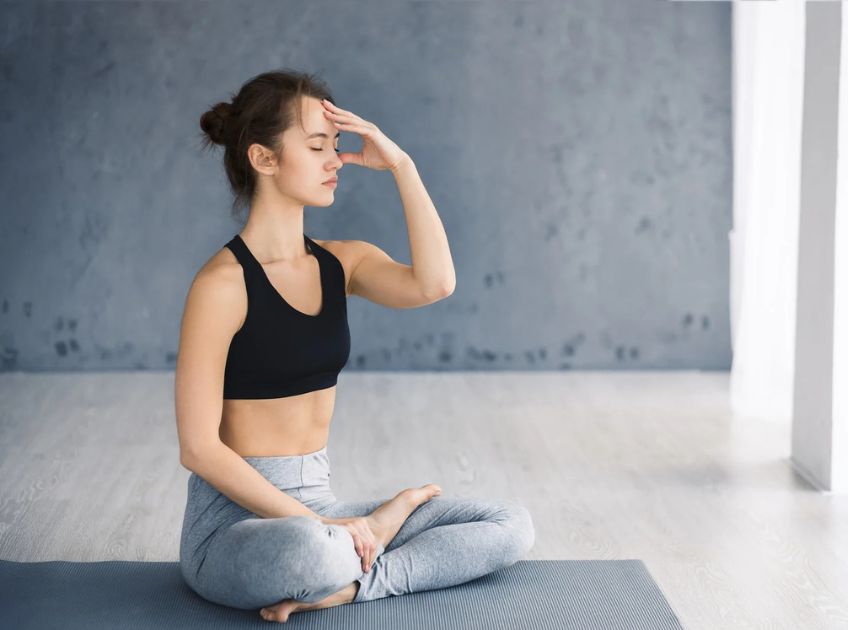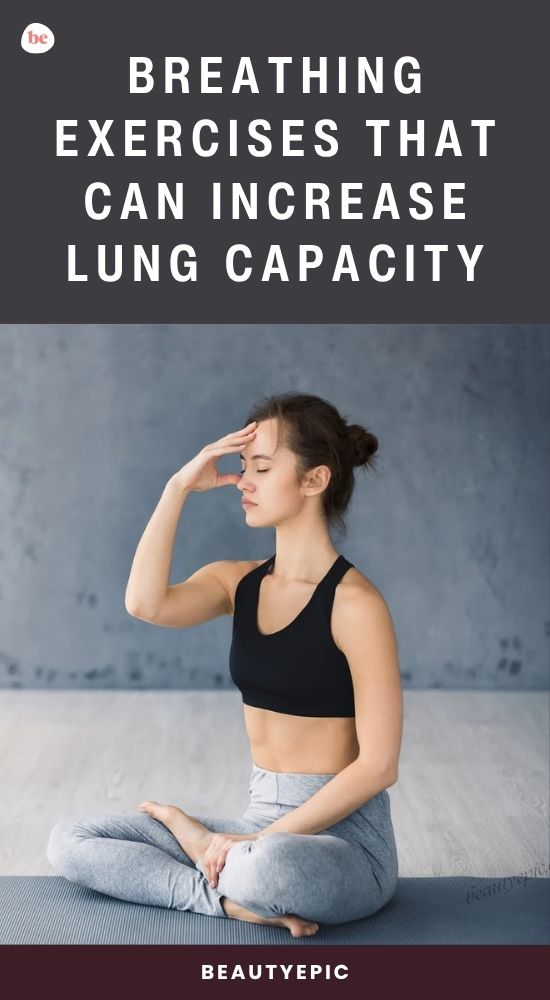
Important: This article is for informational purposes only. Please read our full disclaimer for more details.
Healthy lungs are at the core of overall wellness. Whether you’re an athlete aiming for better endurance, someone recovering from a respiratory illness, or simply looking to breathe easier, strengthening your lungs can significantly improve your quality of life. Poor air quality, smoking, and sedentary lifestyles can weaken lung function, reduce oxygen intake and leaving you short of breath even after mild activity.
Article Contains
- Diaphragmatic Breathing: Training Your Core Muscle for Breathing
- Pursed-Lips Breathing: Controlling Shortness of Breath
- Alternate Nostril Breathing: Balancing Body and Breath
- Why Do People Have Low Lung Capacity?
- What Is Normal Lung Capacity?
- Additional Tips to Keep Your Lungs Strong
- Backed by Research: The Science of Breathing Exercises
The good news? With consistent practice of targeted breathing exercises, you can strengthen respiratory muscles, expand lung capacity, and enhance oxygen exchange. Backed by science, these exercises are simple, free, and effective tools for better lung health.
1. Diaphragmatic Breathing: Training Your Core Muscle for Breathing
Also known as “belly breathing,” diaphragmatic breathing helps engage your diaphragm—a dome-shaped muscle responsible for deep, efficient breaths. Many people rely heavily on shallow chest breathing, which limits oxygen intake.
- How to Practice
- Sit or lie down comfortably.
- Place one hand on your chest and the other on your belly.
- Inhale slowly through your nose, feeling your belly rise as the diaphragm expands.
- Exhale through pursed lips, letting your belly fall.
- Repeat for 5–10 minutes, 2–3 times daily.
- Benefits
- Improves oxygen exchange.
- Strengthens the diaphragm.
- Relieves stress and promotes relaxation.
A 2017 study in Frontiers in Psychology found that diaphragmatic breathing can improve respiratory efficiency and even enhance attention span due to better oxygen supply (1).
2. Pursed-Lips Breathing: Controlling Shortness of Breath
Pursed-lips breathing is particularly helpful for people with COPD, asthma, or lung-related conditions where exhaling fully can be challenging. It prevents airway collapse, slows down breathing, and allows more oxygen to reach the lungs.
- How to Practice:
- Inhale slowly through your nose for about 2 seconds.
- Purse your lips (like you’re about to whistle).
- Exhale gently through pursed lips for 4–6 seconds.
- Continue for 5–10 minutes during or after physical activity.
- Benefits
- Improves oxygen-carbon dioxide exchange.
- Reduces breathlessness.
- Encourages relaxation during exertion.
The American Lung Association recommends this technique as a quick and effective tool to manage sudden shortness of breath (2).
3. Alternate Nostril Breathing: Balancing Body and Breath
Rooted in yoga, Nadi Shodhana (alternate nostril breathing) not only boosts lung capacity but also calms the nervous system and balances airflow through both lungs.
- How to Practice
- Sit comfortably with your spine straight.
- Close your right nostril with your thumb.
- Inhale deeply through the left nostril.
- Close your left nostril with your ring finger and release the right nostril.
- Exhale through the right side.
- Inhale through the right nostril, switch again, and exhale through the left.
- Continue for 5–7 minutes.
- Benefits
- Enhances lung function and oxygen supply.
- Improves focus and reduces stress.
- Promotes respiratory balance.
A clinical trial in Medical Science Monitor (2019) reported that alternate nostril breathing can significantly improve lung capacity and respiratory endurance when practiced regularly (3).
4. Why Do People Have Low Lung Capacity?
Understanding the causes of reduced lung function can help you adopt preventive and corrective measures. Some common reasons include:
- Sedentary lifestyle: Lack of physical activity weakens respiratory muscles.
- Smoking: Damages alveoli (tiny air sacs in the lungs), reducing elasticity.
- Pollution: Long-term exposure to toxins reduces lung efficiency.
- Respiratory illnesses: Conditions like asthma, bronchitis, pneumonia, or COVID-19 can restrict breathing.
- Aging: Natural decline in lung elasticity over time.
By addressing these factors, you can preserve and even improve lung performance.
5. What Is Normal Lung Capacity?
Lung capacity varies depending on age, gender, height, and overall health. Here’s a quick breakdown:
- Total Lung Capacity (TLC): Around 6 liters in healthy adults.
- Vital Capacity (VC): 3–5 liters (the maximum air exhaled after a deep inhale).
- Tidal Volume (TV): About 0.5 liters (normal breathing volume).
Athletes or individuals who practice deep breathing regularly may have higher lung capacity, while smokers or those with chronic illness may have lower values. Pulmonary function tests (PFTs) are used to measure these values clinically.
6. Additional Tips to Keep Your Lungs Strong
Beyond breathing exercises, here are science-backed tips to improve and maintain lung health:
- Stay physically active: Aerobic exercises like walking, swimming, and cycling increase lung endurance.
- Quit smoking: Lung health improves significantly within months of quitting.
- Maintain good posture: Sitting or standing straight allows lungs to expand fully.
- Stay hydrated: Proper hydration keeps mucus thin and easier to clear from the airways.
- Practice mindfulness or yoga: Reduces stress and promotes deeper breathing patterns.
- Protect against pollutants: Use masks in polluted environments and keep indoor air clean.
7. Backed by Research: The Science of Breathing Exercises
Scientific studies consistently highlight the effectiveness of breathing practices in improving lung health:
- Diaphragmatic Breathing – Shown to enhance oxygen uptake and reduce stress responses (1)(4).
- Pursed-Lips Breathing – Recommended by the American Thoracic Society for COPD patients to manage breathlessness (5).
- Alternate Nostril Breathing – Found to improve pulmonary function and increase vital capacity in healthy individuals (3).
These exercises strengthen respiratory muscles, improve oxygen delivery, and can even support heart health through improved circulation.
Frequently Asked Questions (FAQ’S)
Q1. How long does it take to see improvements in lung capacity?
A: With consistent practice (10–15 minutes daily), many people notice better stamina and reduced shortness of breath within 4–6 weeks.
Q2. Can breathing exercises replace medical treatment for lung diseases?
A: No. They are supportive practices that can complement medical care but should not replace prescribed treatments for asthma, COPD, or other conditions.
Q3. Are these exercises safe for everyone?
A: Most are safe, but individuals with severe lung conditions should consult a doctor before beginning. If you feel dizzy or short of breath while practicing, stop immediately.
Strong lungs don’t just help you exercise more efficiently—they improve daily life by making every breath easier and more effective. Breathing exercises like diaphragmatic breathing, pursed-lips breathing, and alternate nostril breathing are simple, accessible, and proven ways to build lung strength and expand capacity.
















